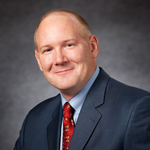As the CIO of Yuma Regional Medical Center, Gene Shaw makes sure that business operations drive technology and development while improving patient care. Translating value to stakeholders with a focus on community health, his background as a registered professional nurse has proven vital during a transitional period in the health-care industry.
First off, what do you consider your most important role as CIO?
Serving as a translator of technology benefits to a primarily nontechnical audience—connecting the dots for leaders, physicians, and boards. Before one can provide a solution, [a technology leader] must understand the need or business driver.
How are the technology and health-care spaces impacting one another?
With the passage of HITECH [Health Information Technology for Economic & Clinical Health Act] in 2009 and the American Recovery & Reinvestment Act, there is a huge convergence of these industries. Effective technology in the hands of physicians and clinicians caring for patients and families can improve medical care and have a positive effect on health outcomes.
What considerations must be made as a CIO working at the intersection of technology and health care?
Technology in health care is driven by the mission of organizations who care for communities of patients and families. Technology does not drive the mission; technology supports organizations, physicians, and clinicians who care for people. Technology in health care is not for technology’s sake.
How can a CIO deploy technology to both drive business and benefit patients?
The effective use of technology in health care—and its benefits to patients and the communities we serve—is the foremost agenda of a health-care CIO. I spend my day on the development of key stakeholder groups and driving results through the effective use of technology.
I.T. budgets are playing a larger part in the expenses of the modern company. How do you know when a new technology is worth the investment?
Through rigorous system selections. [These are] based on measurable functional requirements articulated by the customer who will use the technology. Information technology’s role is to partner with operating departments to describe the benefits that balance the costs.
How are you hoping to develop your role as a CIO?
Health care is in a major transition, moving from a care-of-the-sick model to one of managing the health of a community. This transition is huge. My role has evolved into keeping a foot in both of these worlds. The challenge is to develop and support technology solutions that meet the needs of both models. The health-care CIO must address both frameworks.
How important is it for the CIO to understand the core business?
It is essential! My success as an IT executive in health care is directly related to my clinical background as a registered professional nurse. I have practiced in health care for the past 39 years; it is the only industry I know. My background as a registered professional nurse [provides] the core, base, and success in my role as CIO. My clinical and operations background grounds me in our core mission.
What major challenges do you face? How is electronic health record implementation going?
The major challenge we face is how to offer an improved level of service, while continuously improving outcomes despite declining reimbursement. Our EHR system has been live for almost two years. Each day we improve. The transition was very challenging for many stakeholders, but going back to paper is not an option anyone wants to pursue.
What does the next generation of IT leaders look like? How do you mentor your reports in pursuit of this vision?
Young, bright, very articulate, and very tech savvy! Many of the challenges my generation faces with the adoption of technology will not be an issue for future generations of CIOs. My efforts to prepare future IT leaders focus on understanding our mission, the “core” business of health care—patients and families, not widgets—and connecting the dots.















